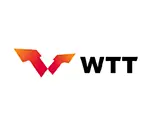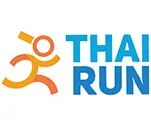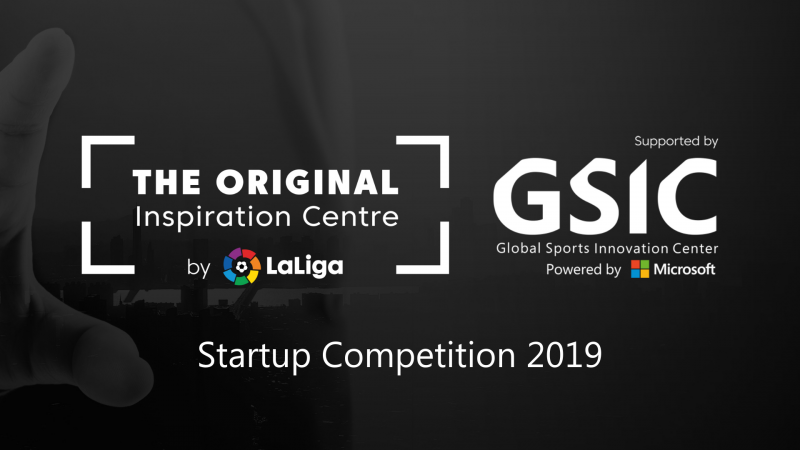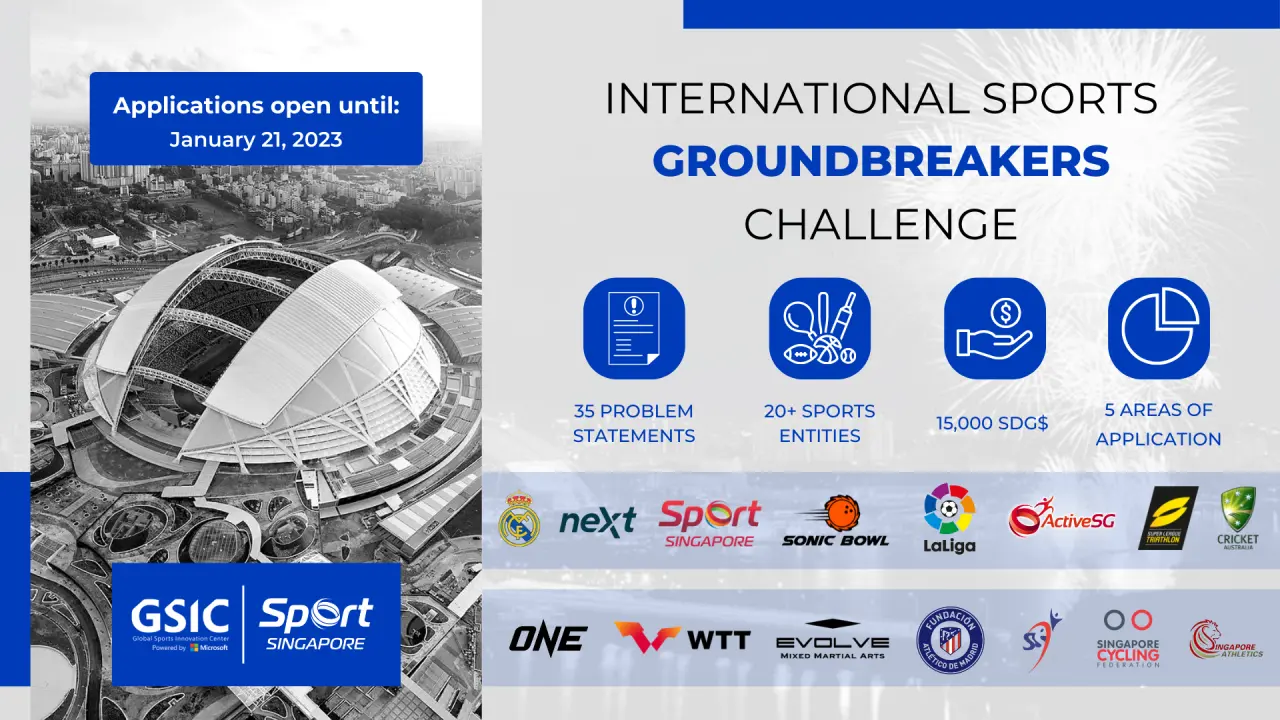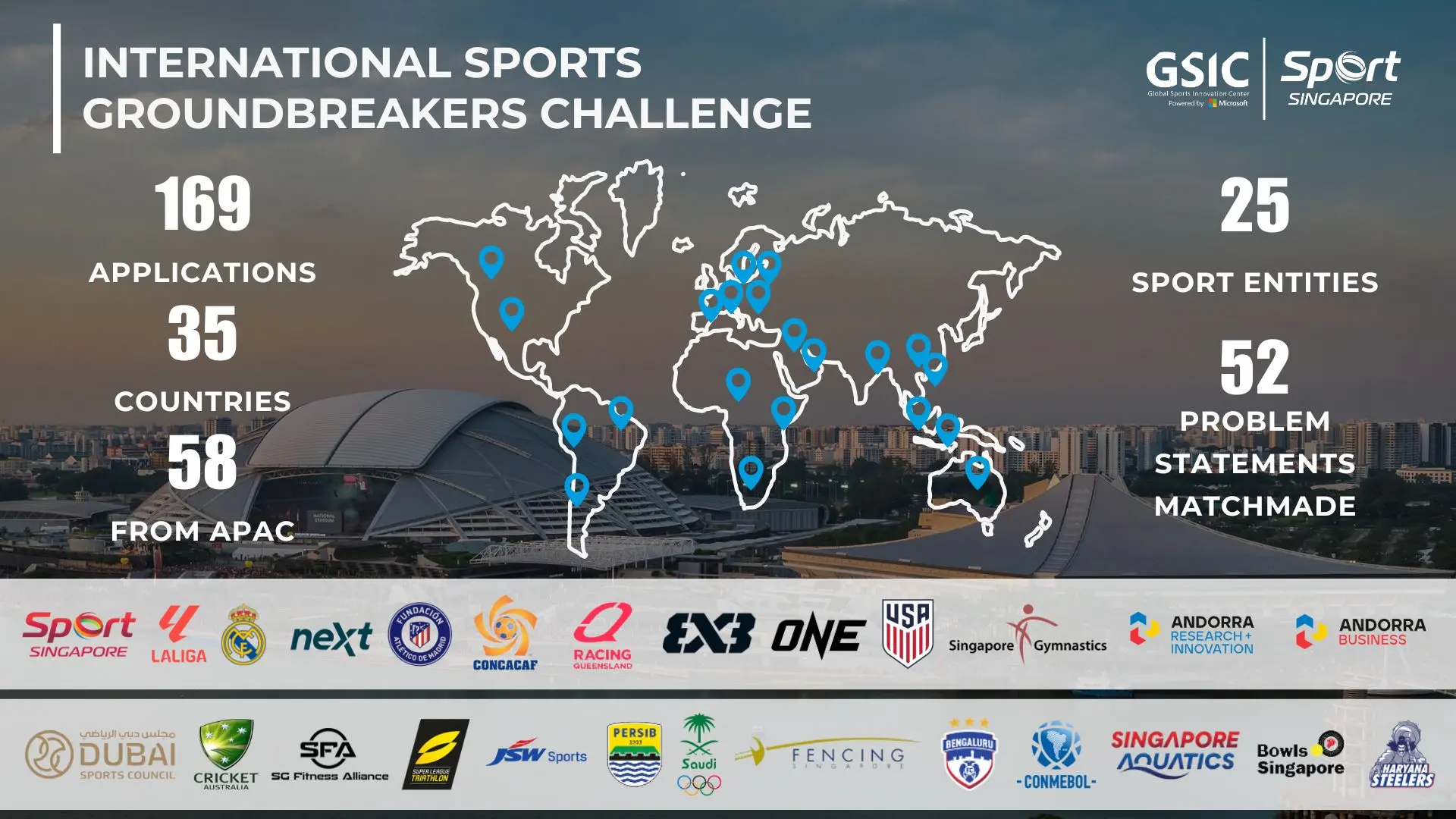Industry
Problem Statements
Bridging the gap between technology providers and the sports industry, creating a thriving ecosystem for sports innovation and development.
About the Initiative
GSIC has spent the last ten years translating problem statements from rights holders and brands into real pilots and scaled solutions.
We’ve compiled a comprehensive list of the most relevant problem statements, rooted in real-world challenges faced by the industry and curated a catalogue of solutions with the best technology providers to solve them. Our partners offer innovative solutions that have the potential to transform the sports landscape.
This unique platform facilitates collaboration, accelerates innovation, and drives the growth of the sports industry.

Problem Statements
Discover the industry’s most relevant problem statements below
In the age of omnichannel content consumption, success is only possible if one is always able to identify, segment and fulfil the needs of an audience that is not homogenous and has a high threshold for quality. What role can data play in one or ideally all three of these activities that must be aligned?
What should our data strategy or approach be to make our app the ‘Default Digital Destination’ for fans?
How can we track utilisation of modular and/or multi-purpose real estate to play, train and compete?
In the context of Horse Racing, understand our patrons and participants better so we can create a tailored experience that meets their needs.
How may we develop a reliable and precise method for measuring the audience reach of streamed football matches on online platforms?
How can we provide tech services to our federations when the 3 different regions we need to serve (North America, Central America, and Caribbean), have a very different level of digital maturity, infrastructure, connectivity, and resources.
Pay-per-view streaming is a growing business and source of fan engagement. How can we utilise our data to streamline the content creation process, enhancing fan engagement and generating additional revenue streams?
How can we universally consolidate all activity data (training + competition) from participants across all mass participation events?
How can we analyse data in real-time during race registration to determine if increased numbers are from early yet repeat participants or early new participants and understand what marketing channels are being effective given the long lead time for participants to decide to enter?
Educating the next generation of Fandom is key to ensuring a future for any sport. What are the ways in which we can raise awareness of fans who are new to a game and ideally convert occasionals into regulars?
Sportainment seeks to use the wider appeal of General Entertainment to attract more fans to a Sport. How can it be used to inform and educate institutions (sponsors, governments, investors) and individuals (parents, carers, coaches, children, athletes) for a macro benefit?
The Supermarket of Attention makes it hard to identify, engage and retain a fan. Data can solve for this to a large extent. However, it also needs to contend with privacy regulation under GDPR and the provenance of personal identifiable information (PII) that is used to segment and target fans. How can we solve for this balancing act, at a speed and scale that is demanding and growing?
Sportainment is today being recognised as an all-new genre of content that combines Sport and Entertainment. How do we decide on the optimal mix? How can we preserve the loyalty of the hard core or die-hard or traditional fan who appreciates the nuances of a sport with the pursuit of new and/or larger mid-market segment that is not as informed about the sport and sees it as an optional mode of entertainment?
How can we make our app the ‘Default Digital Destination’ for fans if their needs/expectations are not homogenous?
Many players with fitness and skill give up on sports in their early teens, at a time when they could still make a transition. For example, right before starting high school. How can we use technology to monitor this process and engage with talent before they drop out to ensure talent pathways and pipeline?
How can we extend event or season-based loyalty to a more year around perennial always one 24/7/365 habit?
Arena Sports can be defined as taking place across a large expanse of land, not all of which is visible to the fan at all times – such as Horse Racing and Motor Sports. This unique contour of the race suggests that there is potential to engage the fan by providing a PhyGital experience that combines what passes in front of them and what they can see on a smart device. How can we solve this?
How can we develop innovative solutions to engage fans through audiovisual content across content creation, data generation, statistical analysis and consumption method?
How can we accurately measure audience engagement across platforms (on air, digital, streaming, social, onsite, in-store and in Web3 spaces) to better analyze the impact of different activities in various scenarios?
How can we empower and enable fans to create their own data stacks and visualisation of magic moments to be shared on social media especially as the numeracy dimension of statistic cuts through linguistic barriers?
Much of Sport is monetised on 3rd party platforms whether short/long-form video, fantasy or betting sites, and ticketing or merchandising. This loses first-party data for the promoter who owns the original intellectual property and prevents them from developing a direct relationship with the fan. How can we solve this?
Fans currently only get to watch aquatics competitions without any means of engagement with the sport, in the stadium or with the athletes.
How can we better engage fans during an aquatics competition?
The table is the most iconic part of Table Tennis. However, it remains the only aspect that has not seen innovations.
How can we innovate the tabletop such that it remains "normal" or "black" during play, but can be used as part of the show presentation in between points and games and engage fans in meaningful ways? Players will need to feel that they are competing just like they are on a regular table with tip-top playing conditions.
Currently, stickers are placed on the table tennis floor to show sponsorship logos.
How can we innovate the floor surface such that it can be lit up as part of the show, possess the same characteristics as a normal floor, is safe for players to play on, and does not affect the quality of play? This can provide an opportunity for deeper sponsorship activation and show presentation.
Pong for Table Tennis was one of the earliest e-sports games in the world. To continue this legacy, we will need to provide as much gamification as possible in the broadcast and TV production, such that it will eventually be turned into a virtual reality esports game.
How can we create a virtual reality environment to better explain the match and bring TV viewers closer to the action? This will give pundits and commentators a much richer product to be able to explain Table Tennis to a wider audience.
Table tennis is a very technical and tactical sport with many subset stories of every match between different styles of players.
Currently, Table Tennis experts understand the different tactics between different players, but the casual fan or new fan does not understand the different idiosyncrasies that go into being a Table Tennis champion.
How can we track the motion and locations of balls in each rally and display this in an attractive way on television, websites or mobile applications, so that it is easier for fans to understand the match?
Table Tennis is such an athletic and tough sport and it is very difficult to become a professional player. The fact that so many people play Table Tennis as a hobby around the world, compared to professional players means that it is tough for people to understand the fundamental difference between pro Table Tennis and hobby Table Tennis.
There is currently no way to show the power and speed of the athletes to tell their amazing sport and how they fundamentally differ from hobby players.
How can we show the true abilities of an athlete through television broadcast and on digital/social media?
How might we strike a better balance between sport & entertainment in a cricket league to retain more fans?
How do we best digitize racing venues and enhance the venue experience?
Create an AI-driven content predictor solution to forecast content engagement while mitigating trolling behavior, fostering a more positive online sports community
How can we leverage event day spectators to drive participation, create more touch points for sponsors and other commercial opportunities?
How can we create a system that tracks runners in real-time and includes interactive race updates, to enhance the experience for both competitors/participants and spectators?
How can we increase interest and engagement with live broadcasts of street races to bring greater visibility to the sport?
How could technology be created and offered in a cost-effective manner to make quality participant engagement accessible to all sizes of events? This can include personalised communication to athletes based on their performance and results and ways of engaging participants in a more immersive way at post-race parties/activities thus generating more exposure for sponsors and more revenue for organisers/rights holders.
How do we use technology to provide individualised drinks at multiple feed stations for 1000 championship runners in a marathon of 50,000 people?
How can we use technology and/or AI to simplify event operations by providing centralised access to critical event information ultimately improving the overall event experience for organisers, participants, and attendees? For example, equipment and other assets, repeated booking processes, and baggage storage and allocation.
Cricket is amongst the fastest growing sports in Asia, Africa and Europe, often as a second or alternative sport adopted by new segments like females in Thailand and Japan. How can player inclusion and Cricket is amongst the fastest-growing sports in Asia, Africa and Europe, often as a second or alternative sport adopted by new segments like females in Thailand and Japan. How can player inclusion and access to facilities be enabled using technology in a sport that needs at least 10 players to make a game of it?access to facilities be enabled using technology in a sport that needs at least 10-players to make a game of it?
How can we engage the next generation at an early age so they can practice and pursue the benefits of Sport to have a healthy lifestyle, develop good habits that last a lifetime, and reduce the burden on public health?
How can we measure the number of young kids being exposed to a sport, understand how why they did or didn’t like it, and be able to remedy adoption to ensure it becomes a habit and a way of life for them?
Water quality is a key variable for the continued wellbeing of those who use public pools. Whether chlorine levels or pH value, in the pump room or pool, dosage levels need monitoring since deviations that exceed legislated parameters pose public health or hygiene risks such as irritation to the eyes and burns to the skin/eyes/other sensitive areas. How can we solve for this?
How can we scale the capabilities and capacities of individuals to measure status of fitness and performance quality independently? How do we strike a balance between self-administration or aided administration such as kiosks and AI-buddies with teleconferencing coaches or booking a consultation or program?
How can we scale the training and utilisation of coaches across the value chain of talent from the grassroots to recreation, community events, amateur competition, professional performance and elite talent at international meets?
Arranging fixtures, venues and teams can be a challenge at the entry to mid-levels of Sport participation from grassroots to community events clubs, schools and even universities. How can we solve this through a marketplace and matching system? This can also be linked to scoring and performance reporting and possibly into PhyGital spaces
How can we facilitate access and adoption for the physically or mentally challenged fan who can partake in sports activity?
How can we create a 360-degree or single view of an athlete (or sporting citizen) that meets the needs of multiple users – from coaches to carers to subject matter experts (nutritionist, psychologist) to commercial sponsors, federations who are tackling or seeking their qualification at an upcoming event etc.?
How to do we track and encourage registrations for mass participation events?
Impact power is a big variable in combat sports such as boxing and mixed martial arts. How can we use sensors or computer vision to calculate the magnitude of force in a punch so that a fighter can find their category through moving data as they do with stationery data like weight?
How might we significantly increase the number of young kids playing cricket?
Address the challenge of monitoring and minimizing head trauma in sports like American football, ice hockey, and rugby, particularly in the absence of helmets in rugby, by innovatively integrating sensors to measure collision impact effectively.
Developing a user-friendly mobile app aligned with the WHO Guidelines on Physical Activity for age groups 18-64 years and 65+, aiming to track activities as per guidelines, offer health outcomes, and cater to seniors. Ideally, the app should be equipment agnostic, creating a versatile health management tool.
How can Sports create a portfolio of games that meets the needs of different segments of Fandom – that balances an awareness of a sport’s rule on one hand with time and money available on the other – from casual games using HTML5 to Web3 for the discerning fan?
How can we use new technologies such as Computer Vision and applications such as motion capture, player tracking and mixed reality to gamify the live broadcasting of a competition and merge it with fantasy and betting where individual fans have skin in the game?
The easy access discovery and consumption of content has raised the bar on the depth and speed of engagement. Fans wish to be constantly connected with their event, team and player brands. How can we design and create PhyGital experiences that are relevant regardless of location, time zones and language?
What alternative or additional means or mediums can we use to engage the next generation from a young age so they are exposed to a wide(r) variety of sport, gain an understanding of the game without being intimidated and appreciate its benefits such as the sense of community it can provide?
Storytelling is a proven way to gain attention in the digital age. However, creating stories is no longer the preserve of institutions such as media publishers and federations, leagues or clubs as individuals – be they fans or creators – also express themselves, share their stories and/or amplify a story. What are the smart ways to surface a story so it meets the desired audience segment?
Sportainment is the New Black as a content genre though it needs shades of grey since Fandom is neither homogenous nor a singular whole. How do we decide the media, messaging and medium to address multiple segments?
What are the creative, content and commercial variables to make our app the ‘Default Digital Destination’ for fans?
The atmosphere in the venues is a key part of the media product as a barometer of fan sentiment but is also highly dependent on spectators attending at each event. How can we leverage technologies to ensure a full stadium look and feel even when turnout is sub-optimal and yet keep the experience authentic?
How can we automate the real-time data visualisation of players and plays for bespoke outputs to meet the needs of pre-determined customer segments whether for consumers, trade or prosumers (creators)?
Impact power is a big variable in combat sports such as boxing and mixed martial arts. How can we use sensors or computer vision to calculate the magnitude of force in a punch? How can this be converted into data visualisation or graphics to communicate the ability of a fighter?
In the age of on-demand content, convenience trumps content. Consumers now want to watch and interact with content so it’s a two-way active conversation rather than a passive one-way experience. Consumers are also value-conscious – trading their time, loyalty and money for only the most optimal experience. How can technology solve for such storytelling?
Cycling is a growing sport, especially on tarmac and thin tires but is constrained by city design, road safety measures due to peripheral vision, and a critical mass of accessible routes. How can this fast growing segment be served and serviced?
What solutions are available to have modular and multi-purpose real estate at a local postcode or community level (rather than large stadiums for marquee/major events) so talent can play, train and compete?
How can location sensors help in the deployment of staff and contractors during an event and best modulate during peak points such as half time and end of play when crowds behave en masse? Further, how can this system also be used during emergency situations?
How can we improve stadium operations and enhance the fan experience before, during, and after events with a solution that is precise (less than 1 meter) and fast (less than 2-second latency) whilst adhering to privacy laws?
The atmosphere in the venue is a key part of the media product but is also highly dependent on spectators attending each event. What technologies can be used to enhance the sound and senses of existing attendees regardless of crowd size – as much for the fans in stands, as for those watching individually on a smart device and those watching in groups in homes, public spaces and bars?
What commercial opportunities can be had when we bridge the gap between those watching on-air or online with those interacting socially – and those in the Web3 environment?
How can we elevate collective experiences such as watch-together across homes and convert them into buy-together (a la Groupon) or support-together experiences that link the stadium community for an event and/or with their community cohort outside of it?
How can stadiums or other large venue(s) be more flexible spaces that can scale down based on different capacity requirements such that we can diversify our event offerings without compromising on the intimate fan experience?
Create a connected venue for Horse Racing that monitors and reports on its usage to ensure it operates at a high level. Ensuring the venue is comfortable, safe, secure and efficient
How can we improve race pack collection processes by enhancing efficiency, accuracy, scalability, including real-time inventory with smart participant identification, while ensuring secure data?
How can we implement technology for accurate race course measurements alongside the Jones Counter method?
How can we use technology to improve event operations and spectator experience through more efficient crowd control, real-time traffic tracking and wayfinding?
How can we track and tie sustainability metrics into sponsorship so brand partners can publicise their commitment and practice of being eco-friendly and environmentally conscious or responsible?
How can we make content, billboards and data shoppable so that brand sponsors can leverage the emotion of a live sports environment and their association with that event as a partner – to shorten/flatten the demand funnel from awareness to purchase and make money?
How do football clubs generate demand and provide commercial strategy for brands that could be measured for return on marketing investment that show sponsorship as one of the vehicles suitable for brands?
How can a football club develop its digital subscription and membership strategy and offering suitable to its core target audience and convince them to pay for the services?
Cricket is amongst the fastest-growing sports in Asia, Africa and Europe, often as a second or alternative sport adopted by new segments like females in Thailand and Japan. How can technology solve for access, inclusion and performance in a sustainable manner that avoids the use of paper?
How can we sustainably solve for optimal real estate (mid-size stadiums or neighbourhood playing enclosures) that is sufficiently equipped (and well located) to host competitions that are key to surfacing talent for identification?
Mass Participation Sports such as marathons, park runs and bike rides accrue large and lasting benefits to tourism, public health and community engagement. But they also create a lot of waste – from runner bibs and number tags for the participants, to posters and signage for directional or aesthetic reasons, and, packaging from food & drinks consumed by spectators, participants and contractors. How can technology solve for a reduced carbon footprint and more sustainable delivery of such events?
The sourcing, cleaning and redistribution of water in public and private pools can gain from being eco-friendly whilst conforming to legislation and managing external contaminates from the environment such as load, rainfall, and exposure to ultraviolet deterioration. How can we cost-effectively, accurately, and digitally capture readings and administer dosage? Can they be combined with an early warning system and/or a fail-safe trigger mechanism if sensors and instruments are off-calibration?
How can we gamify learning about recycling and eco-friendly tips & tricks to raise awareness of its importance, especially amongst young fans? Can this be linked to their daily activities? Should it be focused on match-day experiences when there is deeper attention and higher emotional investment? Can this be converted into a PhyGital experience with a Web3 dimension that goes back & forth in time to show the impact of habits harming the environment?
How can we enable those already in urgent need of sustainability and who are willing/committed to make a difference through steps such as the measurement of carbon footprint and emissions? Are there industry best practices for the implementation of sustainability measures?
Sustainability is closely tied to event delivery and venue management. Is there scope for a comprehensive platform such as an Enterprise Resource Planning (ERP) used by large location-based service organizations such as airlines or supermarkets – all of which are consumer-facing and their monetisation is linked to opportunity windows created by high footfall? An integrated platform will manage dependencies and drive synergies such as economies of scale or shared gains.
How can we plan design and deliver on measuring and managing carbon footprints in stadiums or allocate share for events promoters? Is there industry best practice on procurement? How can we optimize input usage such as water, soil, and electricity? How can we track outputs' impact such as energy or water emissions and waste management of F&B packaging etc?
Future European legislation will ban the use of chemical pesticides in green areas, including natural grass sports surfaces. This will impact quality standards for professional football and be especially adverse in countries such as Spain that face turf diseases and the lack of alternative treatments. How can we meet legislation requirements yet operate to a high-quality standard?
How can we use sensors and lasers to ring-fence competition areas such as for combat sports since not all gyms have the physical space for a ring or the investment needed to build and maintain a cage?
How can we use new technologies such as Computer Vision and applications such as motion capture, player tracking and mixed reality to democratise learning, and accelerate talent development?
Cricket is amongst the fastest-growing sports in Asia, Africa and Europe, often as a second or alternative sport adopted by new segments like females in Thailand and Japan. How can player performance be tracked to identify talent and enable pathways journeys from recreation to competitive?
Can we have non-invasive ways to capture additional vital signs of a player to build a more complete profile for analysis of performance (during training and competition), anticipate injury and expedite recovery?
How can we make players accountable for following regimens and meeting their obligations to those who have invested their ‘currency’ - whether that is time, money, reputation, brand equity or other assets?
Hydration is a key performance and recovery strategy at any level in sports. Once the training session or match starts, there is no specific control over the specific amount of water, hydration from energy drinks, etc., that they get. How can technology help monitor this hydration status from an individual perspective?
The current lack of remote HRV (Heart Rate Variability) monitoring presents a significant health challenge for athletes. Those with intellectual disabilities (ID) are at higher risk for cardiac diseases and other health issues. What reliable, non-intrusive, and robust HRV monitoring device can enhance safety and inform coaches & carers on stress levels, so that we can better manage talent?
Impact power is a big variable in combat sports such as boxing and mixed martial arts. How can we use sensors or computer vision to calculate the magnitude of force in a punch and adapt existing or create new techniques and/or training to optimize talent for High Performance?
How can we extend the use of decision-making capability enabled through Computer Vision and Mixed Reality in Cricket, Tennis & Football to other sports such as Gymnastics where judging can be marginal if not subjective to ensure the best talent on the day finds their way to the podium?
Brazilian Jiu-Jitsu is one of the leading forms of self-defense in the world today. It is a sport that always requires 2 persons to practice. Currently, there are grappling dummies available for individuals to use when they train alone but these have zero interactivity and engagement while training. They are also extremely heavy and not viable for many smaller-sized individuals to properly use.
How can we let practitioners know when they are applying techniques correctly? How can we also provide practitioners with other information such as pressure applied while using those techniques? The solution should be durable, yet made of a lightweight material.
Muay Thai punch/ kick pads and boxing mitts are integral in Muay Thai and boxing training. Practitioners hit these pads/ mits while practising these martial arts to improve their power and accuracy. While still useful and a key element in training for striking martial arts, there is no way to quantify an athlete's improvement in power, speed and accuracy.
How can these pads and boxing mitts detect and measure the power and accuracy of an athlete during training, with the help of an app?
How can we generate a data lake so that every department in a sports organization is connected and can get access to it in a more efficient way?
How can technology contribute to a better understanding of the player’s actions of work time while keeping a respectful and non-invasive perspective?
How can we use modern solutions to help competition and matchmaking teams keep a hawk-eye on athletes before and during fight week to de-risk the process of matchmaking?
Can video processing be able to accurately label based on Combat Sports positions and movements of the fighters to identify different fight styles of athletes?
How can technology enhance the injury prediction of players without using wearables?
Develop a robust live match analysis system that effectively collects automated data and tracks individual player performance, enabling comprehensive statistics generation.
Develop a user-friendly mobile application that provides players and coaches with seamless access to post-match individual and team videos, pre-match opposition analysis, and detailed game-related data and metrics, serving as a central hub for efficient team analysis and preparation.
Create a comprehensive platform for talent scouting, featuring organized player databases and scouting tools. This platform should facilitate match coverage, data collection, and player tracking across various tournaments, including local and unstructured ones, enabling systematic assessment of player videos and stats for effective talent identification.
Exclusive Access
Catalog of Solutions for Sports Entities
GSIC powered by Microsoft has developed a curated catalog of top-tier solutions, for sports entities providing essential information on leading solution providers for a wide range of problem statements. Our catalog features cutting-edge solutions designed to address the unique challenges facing the sports industry today including.
Scouting of Solutions
Gain access to the best, market-tested tech solutions from around the world to solve your current challenges with best in class technologies.
Pilot Projects
Get introductions to explore potential implementations/pilot projects with the tech providers.


GSIC Catalog of Solutions
World-Class Solution Providers
Join the GSIC ecosystem and become a vital part of our comprehensive catalog of solutions. Your company’s innovative offerings could be the key to solving the most pressing challenges facing the sports industry today.
GSIC Members
From 60 countries across the globe, with client portfolios including some of the top sports entities in the world.
Open Innovation Challenge Finalists
The best startups and scaleups, finalists and winners of GSIC’s diverse open innovation programs.
Other World-Class Companies
Industry giants offering proven track records working with global sports entities and rights holders.
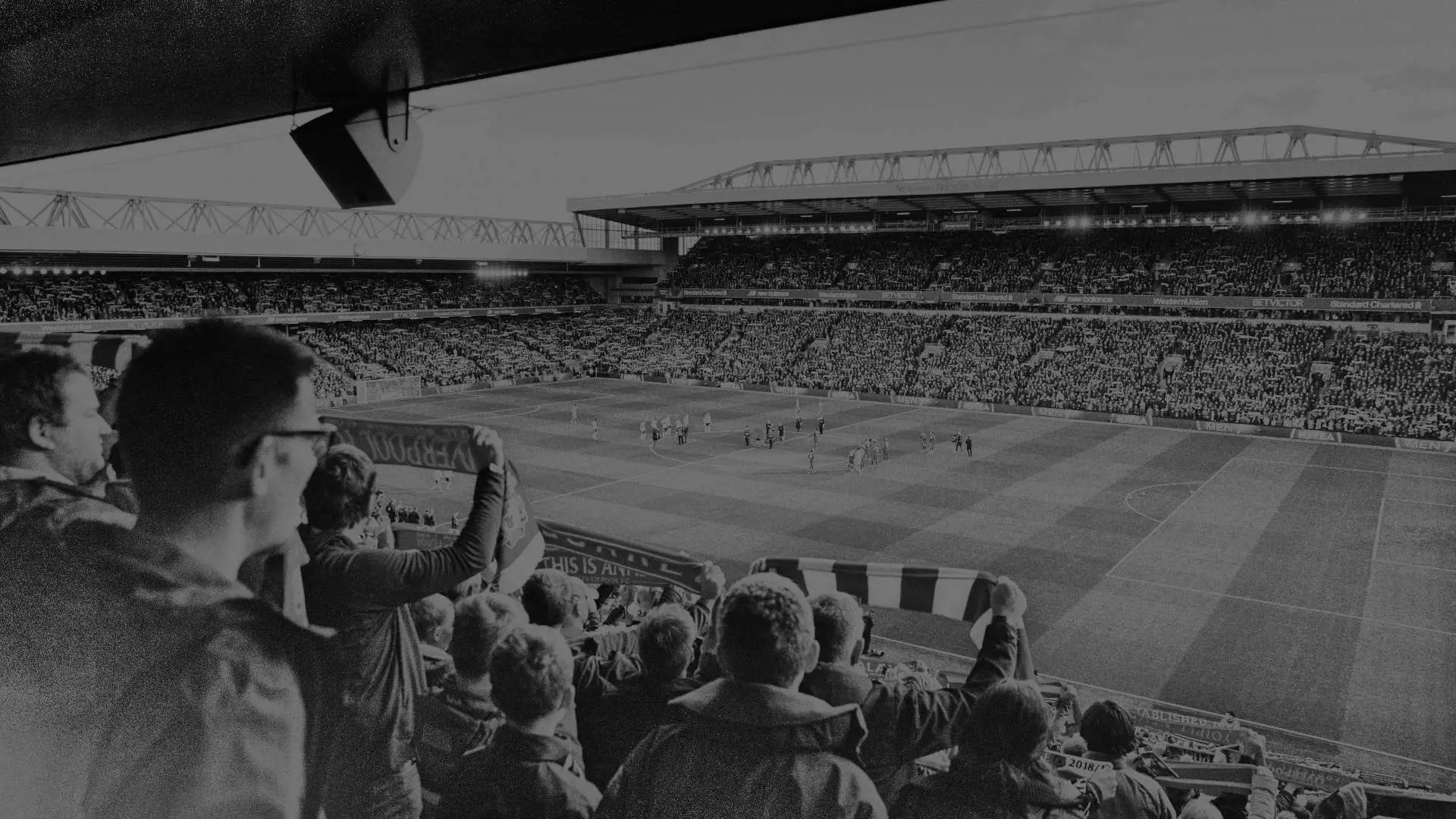
Solutions Catalogue
Explore the future of sports innovation
Our Solutions Catalogue brings together cutting-edge products and services from our global community. Discover how technology is solving real challenges across every corner of the sports industry — from team and player performance to smart venues, fan engagement, esports, sustainability, education, fitness & health, and more.
Whether you’re a sports organization, brand, or technology partner, find the solutions you need to grow and thrive.
A decade of doing
... not just talk
Reports & Whitepapers
Essential resources for the sports industry
Explore GSIC’s comprehensive collection of reports and whitepapers, showcasing best practices from throughout the sports industry. Our resources cover a wide range of topics, from AI and Smart Venues, High Performance Technology and Sports Tourism, providing valuable insights and innovative strategies to help you stay ahead in the dynamic world of sports.



























